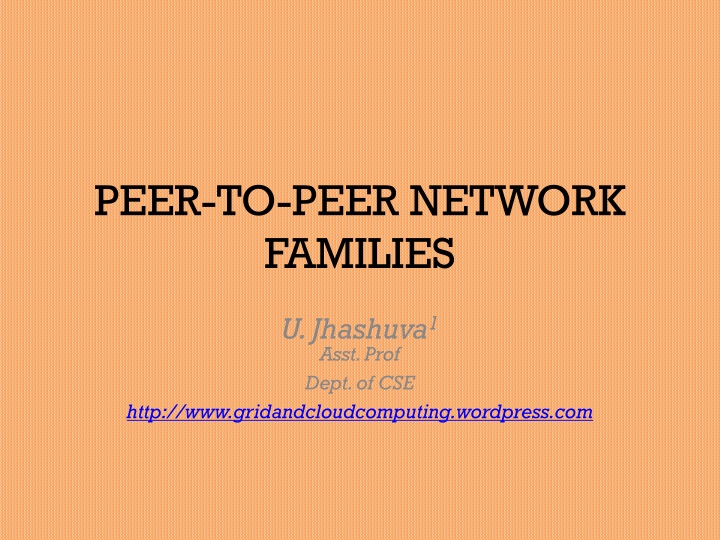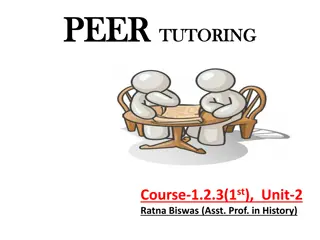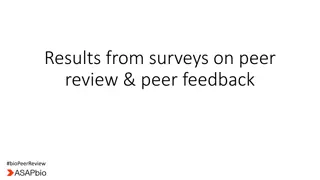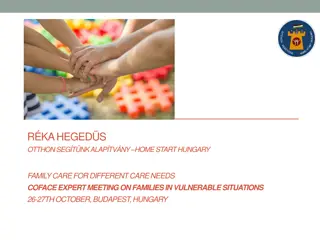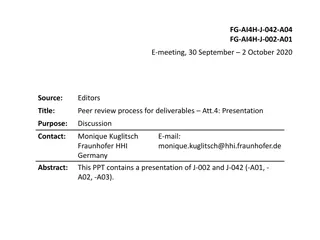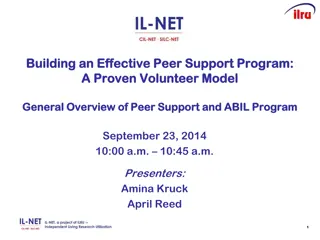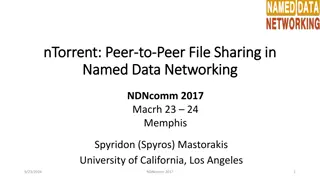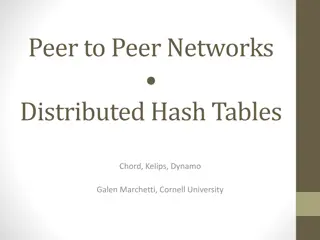Peer-to-Peer Network Families
The peer-to-peer (P2P) architecture provides a distributed model of networked systems where every node acts as both a client and a server. P2P systems offer self-organizing, decentralized control, with peers autonomously joining or leaving the network. This content explores P2P systems, overlay networks, application families, computing challenges, and more.
Download Presentation

Please find below an Image/Link to download the presentation.
The content on the website is provided AS IS for your information and personal use only. It may not be sold, licensed, or shared on other websites without obtaining consent from the author.If you encounter any issues during the download, it is possible that the publisher has removed the file from their server.
You are allowed to download the files provided on this website for personal or commercial use, subject to the condition that they are used lawfully. All files are the property of their respective owners.
The content on the website is provided AS IS for your information and personal use only. It may not be sold, licensed, or shared on other websites without obtaining consent from the author.
E N D
Presentation Transcript
PEER-TO-PEER NETWORK FAMILIES U. Jhashuva1 Asst. Prof Dept. of CSE http://www.gridandcloudcomputing.wordpress.com
CONTENTS INTRODUCTION P2P SYSTEMS OVERLAY NETWORKS P2P APPLICATION FAMILIES P2P COMPUTING CHALLENGES SUMMARY REFERENCES
INTRODUCTION The P2P architecture offers a distributed model of networked systems. P2P network is client-oriented instead of server-oriented
P2P SYSTEMS In a P2P system, every node acts as both a client and a server, providing part of the system resources. Peer machines are simply client computers connected to the Internet. All client machines act autonomously to join or leave the system freely. No central coordination or central database is needed. The system is self-organizing with distributed control. Cont
P2P SYSTEMS Architecture: Cont
P2P SYSTEMS Initially, the peers are totally unrelated. Each peer machine joins or leaves the P2P network voluntarily. Only the participating peers form the physical network at any time. Unlike the cluster or grid, a P2P network does not use a dedicated interconnection network. The physical network varies in size and topology dynamically due to the free membership in the P2P network.
OVERLAY NETWORKS Data items or files are distributed in the participating peers. Based on communication or file-sharing needs, the peer IDs form an overlay network at the logical level. This overlay is a virtual network formed by mapping each physical machine with its ID, logically, through a virtual mapping. When a new peer joins the system, its peer ID is added as a node in the overlay network. Cont
OVERLAY NETWORK When an existing peer leaves the system, its peer ID is removed from the overlay network automatically. Therefore, it is the P2P overlay network that characterizes the logical connectivity among the peers. There are two types of overlay networks Structured Unstructured Cont
OVERLAY NETWORK An unstructured overlay network is characterized by a random graph. There is no fixed route to send messages or files among the nodes. Structured overlay certain connectivity topology and rules for inserting and removing nodes (peer IDs) from the overlay graph. networks follow
P2P APPLICATION FAMILIES Based on application, P2P networks are classified into four groups. Details have mentioned in the table below. Cont
P2P APPLICATION FAMILIES Collaboration P2P networks include MSN or Skype chatting, instant messaging, and collaborative design, among others. The third family is for distributed P2P computing in specific applications. For example, SETI@home provides 25 Tflops of distributed computing power, collectively, over 3 million Internet host machines. Other P2P platforms, such as JXTA, .NET, and FightingAID@home.
SUMMARY We learned about CLUSTERS OF COOPERSTIVE COMPUTING P2P NETWORKS GRID COMPUTING CLOUD COMPUTING System Models for Advanced Computing
REFRENCES 1. [1.3. System models for Distributed Computing] in Distributed and Cloud Computing : From Parallel Processing to the Internet of things by Kai Hwang, Geoffrey C. Fox, and Jack J. Dongarra
